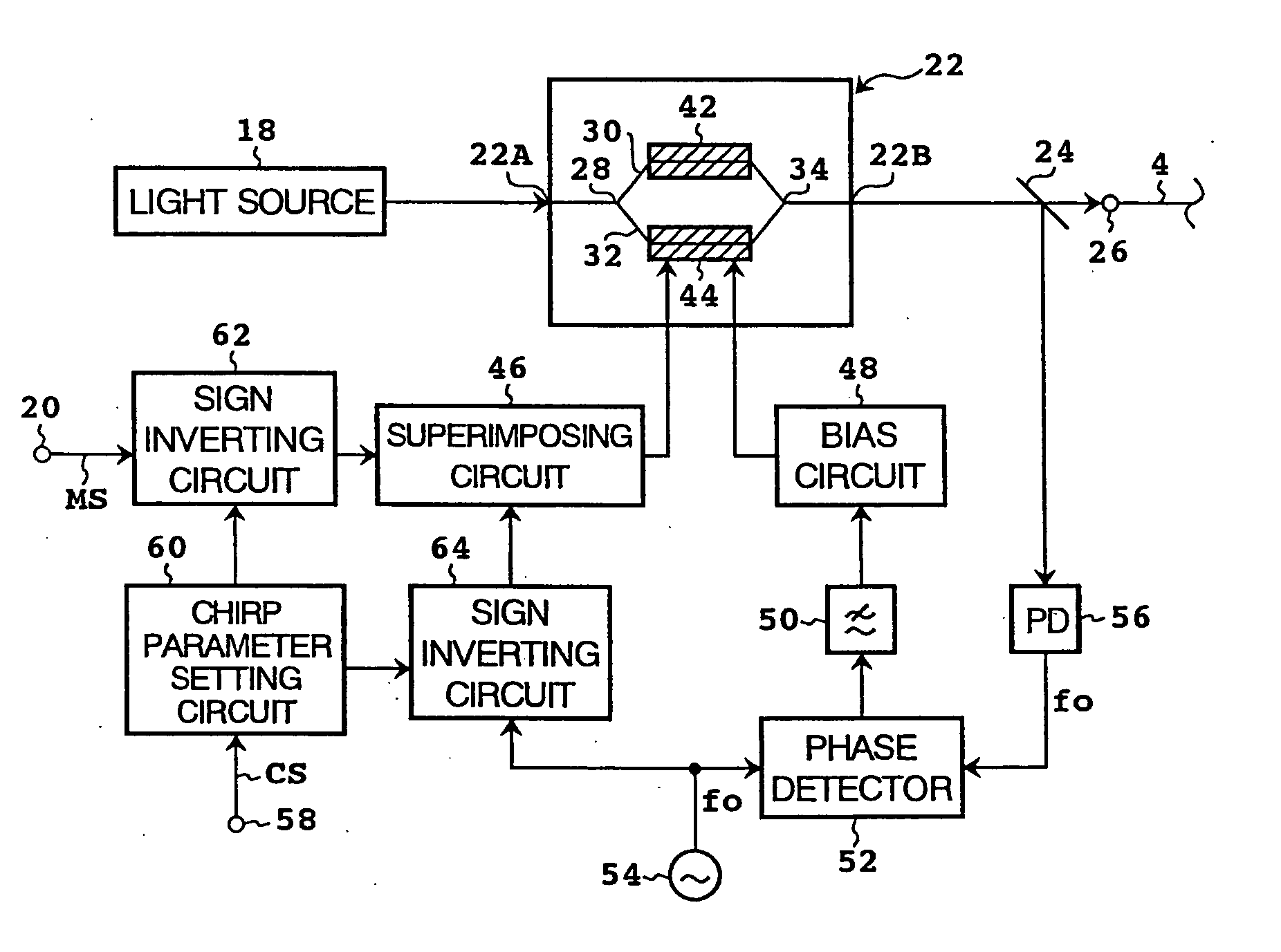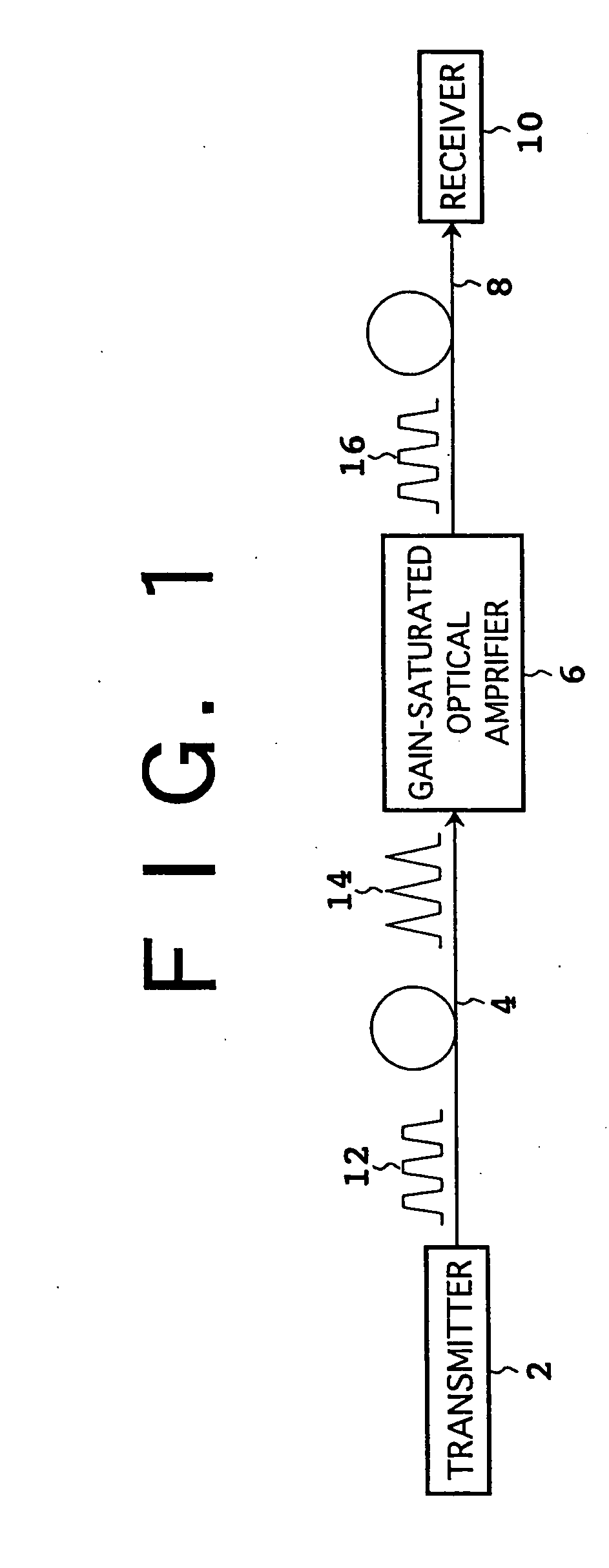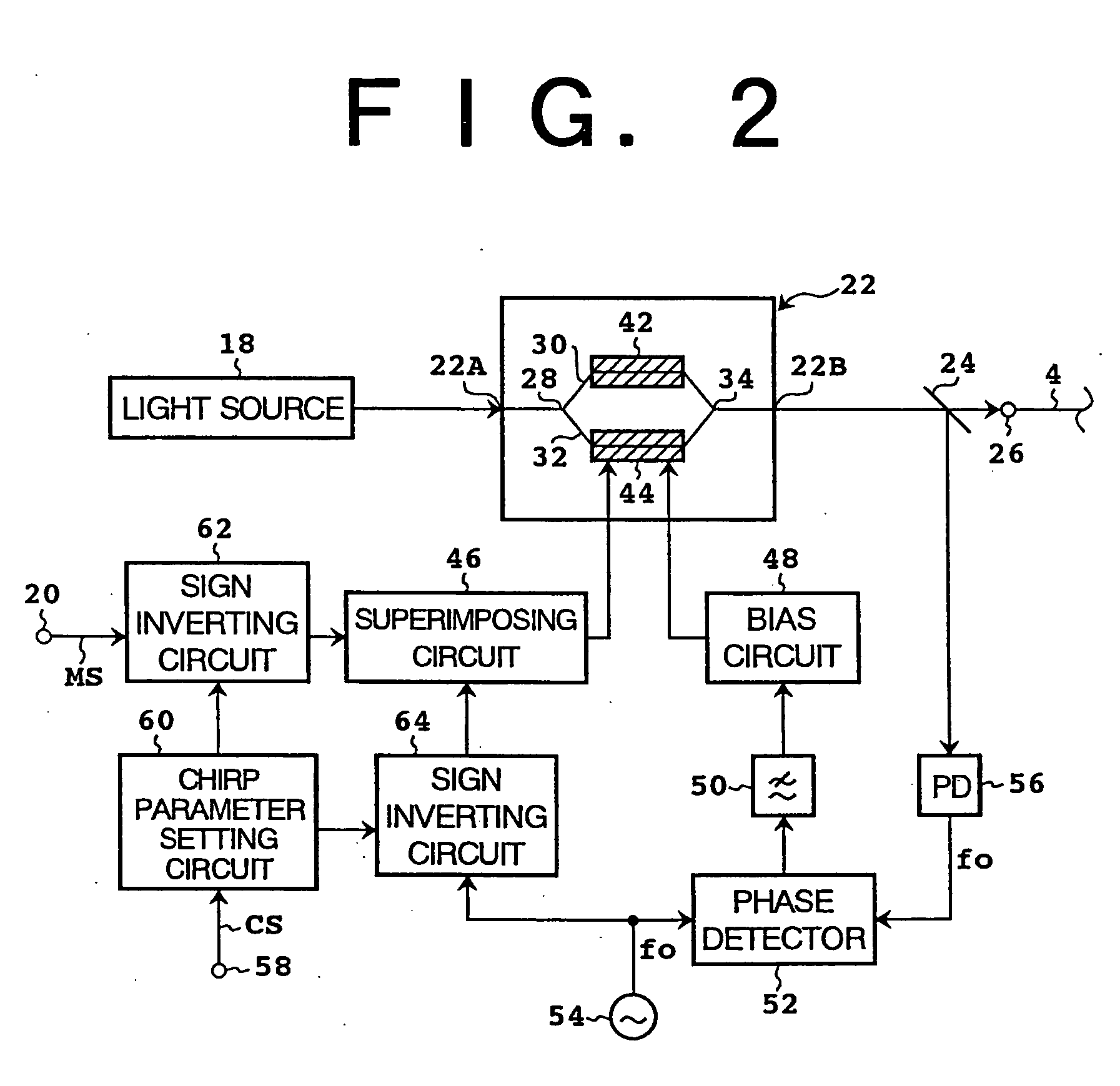Method, optical device, and system for optical fiber transmission
a technology of optical fiber and optical fiber, applied in the field of optical device, optical device, and optical fiber transmission system, can solve the problems of waveform distortion, frequency chirping, and limited transmission capacity of optical fiber, and achieve the effect of increasing the input power of optical signals
- Summary
- Abstract
- Description
- Claims
- Application Information
AI Technical Summary
Benefits of technology
Problems solved by technology
Method used
Image
Examples
Embodiment Construction
[0041] Some preferred embodiments of the present invention will now be described in detail with reference to the attached drawings. The same reference numerals in similar drawings denote like or similar parts.
[0042]FIG. 1 is a block diagram showing a first preferred embodiment of the system according to the present invention. This system includes a transmitter 2, a gain-saturated optical amplifier 6 connected to the transmitter 2 by a first optical fiber 4, and a receiver 10 connected to the optical amplifier 6 by a second optical fiber 8. The transmitter 2 outputs a pulsed optical signal to the first optical fiber 4 as shown by reference numeral 12. The first optical fiber 4 is provided so that the optical signal output from the transmitter 2 is compressed on the time axis as shown by reference numeral 14 as propagating in the first optical fiber 4. A compressed optical signal output from the first optical fiber 4 is supplied to the optical amplifier 6. The optical amplifier 6 has...
PUM
| Property | Measurement | Unit |
|---|---|---|
| wavelength | aaaaa | aaaaa |
| width | aaaaa | aaaaa |
| frequency | aaaaa | aaaaa |
Abstract
Description
Claims
Application Information
 Login to View More
Login to View More - R&D
- Intellectual Property
- Life Sciences
- Materials
- Tech Scout
- Unparalleled Data Quality
- Higher Quality Content
- 60% Fewer Hallucinations
Browse by: Latest US Patents, China's latest patents, Technical Efficacy Thesaurus, Application Domain, Technology Topic, Popular Technical Reports.
© 2025 PatSnap. All rights reserved.Legal|Privacy policy|Modern Slavery Act Transparency Statement|Sitemap|About US| Contact US: help@patsnap.com



